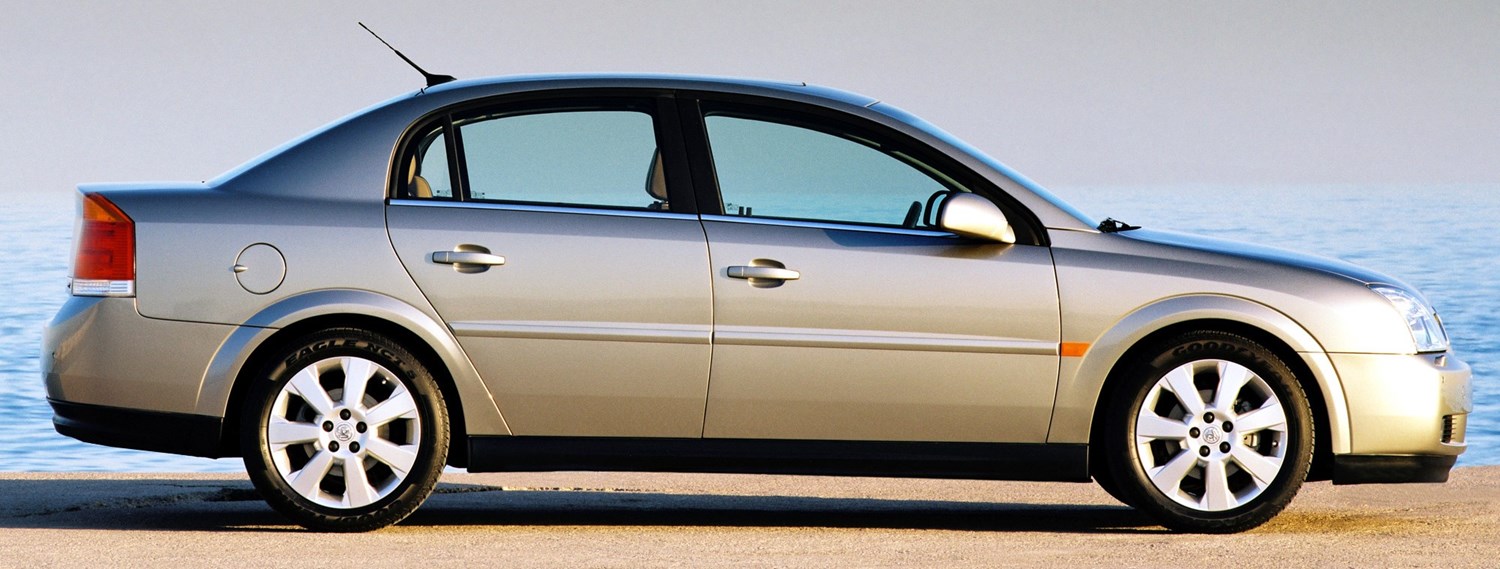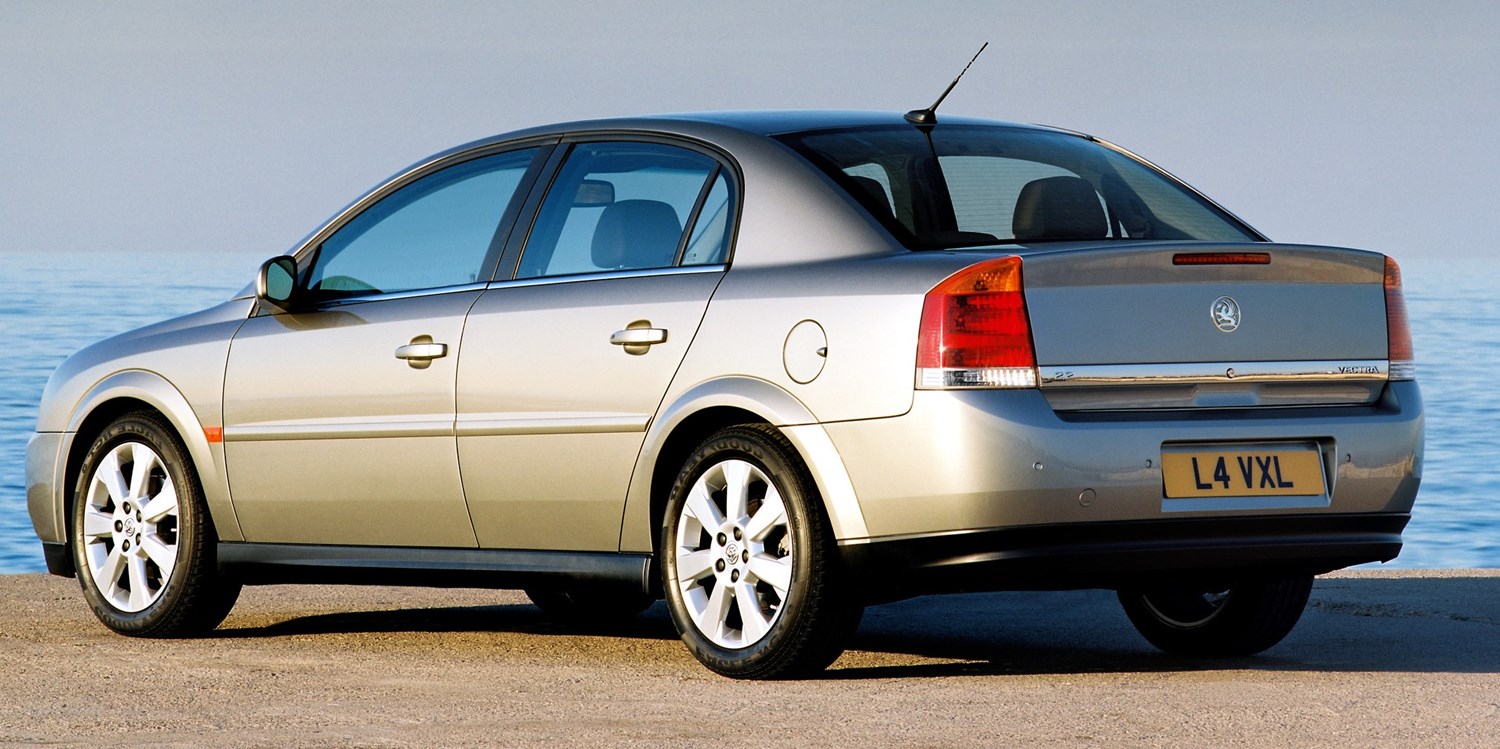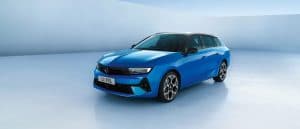Model review
The Vectra was introduced to the UK market in 1995 as a replacement for the popular but ageing Cavalier.
In fact the UK's first Vectra was actually the second generation of the Opel Vectra, as the first generation was, confusingly, sold in the UK as a third generation Vauxhall Cavalier – the first two generations of which were actually rebadged Opel Ascona models. This is why you'll sometimes see the Vectra being referred to as 'Vectra B'.
Available as a four-door saloon or five-door hatchback and estate, the Vectra quickly became one of the UK's best-selling cars. With a wide range of petrol and diesel engines and both manual and automatic gearboxes, it had something for all purposes. There were sports models too, tying into the firm's motorsport endeavours and use of historic badges like 'GSi' and 'Super Touring'. The last Vectras also saw treatment from Vauxhall's newest performance branch, VXR.
It rapidly gained a reputation for police work, both as a fully liveried patrol car and an undercover car, and saw a lot of success on the touring car circuit. It was also especially popular as a fleet car.
The Vectra's major competitor on all fronts was the Ford Mondeo. It was pitched to the same kind of customer, provided the same engine, gearbox and body choices, raced it on the track and was also renowned for fleet and the police use. In fact politicians could have referred to the man in the street as a 'Vectra Voter', but instead chose 'Mondeo Man'. Other alternatives included the Peugeot 405/406, Volkswagen Passat, Honda Accord and Mazda 626/6.
After the first Vectra was introduced in 1995, it was facelifted in 1999 and became the last vehicle to be built at the Luton factory when it was replaced by a second-generation car in 2002. This Vectra C was considerably larger and heavier than its predecessor. It didn't stop the dwindling sales across Europe and the Vectra was replaced by the Insignia in 2008.

Latest model
The second generation of Vectra, the Vectra C, was also its last as the name was phased out to make way for the Insignia in 2008. It was available as a four-door saloon, five-door hatchback or five-door estate, and formed the basis for the very similar Vauxhall Signum estate.
There were a dizzying array of engine and trim choices. Petrol options included 1.8 and 2.2-litre, with a 2-litre turbo in the sporty SRi, and a 2.8-litre V6 'Elite' model which was further tuned for the VXR performance flagship. Diesel was largely accounted for by a 1.9-litre CDTi in various states of tune, but a larger, 3-litre V6 diesel was also available.
Unless you're familiar with Vauxhall trim levels, the range could be a little confusing. The entry level car was the Exclusiv, followed by the Life. Each was only available with the 1.8-litre petrol or 1.9-litre diesel. Sitting above these was the SRi, which was available with almost every engine, including a potent 2-litre turbo and V6 diesel, but not the V6 petrol.
Then came the Design, which reverted to the 1.8-litre petrol and 1.9-litre diesel, but added the 2.2-litre petrol. Top specification was the Elite, with 1.9-litre and V6 diesels, or 2.2-litre and V6 petrols. Of course, the performance flagship was the VXR, which was only available with the V6 petrol. Earlier versions of the Vectra C also included a 'Club' specification below Exclusiv.
Despite the very wide array of badges, performance and economy was broadly the same across the range. Most Vectra models took somewhere between 8.5 and 11 seconds to hit 60mph, while petrols returned 35-40mpg and diesels 40-50mpg. The obvious exceptions were the SRi Turbo and the Elite V6 and VXR models, the latter of which were significantly quicker and a great deal thirstier.
Value for money
The Vectra always packed in a tremendous amount of value. The entry-level Life model wasn't particularly well-specified compared to the equivalent Mondeo, but it did have standard air conditioning, electric mirrors and front electric windows. Higher specification cars would come with climate control, satellite navigation and electronic stability control.
Running costs were largely the same for most Vectra models. Petrol buyers could expect up to 40mpg depending on trim and gearbox, while diesel owners could see 50mpg on paper. The exceptions to this were, naturally, the high-powered SRi Turbo and the Elite V6 cars. 30mpg would be optimistic for the SRi, while the 2.8 V6 Elite recorded 25mpg on paper.
There's particular reason to be wary of the V6 petrol Elite too. High emissions put it directly into the top VED bracket, costing you £535 each year. Most of the rest of the range is more reasonable, with VED priced at £190 to £305 a year. Insurance groups are generally in the 15-22 range too.
Looks and image
Vauxhall's image, and that of the Vectra, is something of a mixed bag. There's a strong 'everyman' image to both the car and the brand, with the Vectra popular across age groups, genders and occupations. It was particularly popular as a fleet vehicle too, although these days they're more likely to be found on minicab fleets.
Unlikely as it may seem, the Vectra has a solid motorsports reputation too. Thanks to the British Touring Car Championship, which the Vectra (like the Cavalier) won twice, the German touring car series, Vauxhall cultivated the 'win on Sunday, buy on Monday' image, and special edition models were built on the motorsports heritage.
However, the car and the brand have issues with perceived quality and reliability. A recent spell of negative publicity has not helped, and while people who stay faithful to Vauxhall have only praise, others aren't convinced. The fact that so many Vectras (and more recently Zafiras) lived out their lives as minicabs – one of the hardest jobs a car can do – should be a testament to their durability.

Space and practicality
As a large family car you'd expect the Vectra to be spacious and practical and it doesn't disappoint. While perhaps not ultimately as roomy as some rivals, it won't be found wanting for headroom and legroom for four adults and there's no problem getting three kids in the back either.
Boot space on the second generation car is generous even by present standards, with 500 litres in the saloon/hatchback and 530 litres in the estate. With the seats down in the estate there's more than 1,800 litres available, which you'd be hard pressed to beat.
The Vectra was tested three times in its production by EuroNCAP. The first test, in 1997, saw it score two stars, with a third struck through to reflect some safety fears. The updated model was tested in 2001 and scored three stars thanks to improvements in the restraint systems, including airbags.
The second generation car was tested shortly after, in 2002, and reached a four star rating thanks to the new chassis and the large array of standard safety gear like electronic brake for distribution, cornering brake control and emergency brake assist.
Engines
There's always been a wide selection in the Vectra, with as many as 15 different engines used across the cars lifetime. On the first Vectra B models, petrol engines ranged from a 73hp 1.6-litre to a 197hp 2.6-litre V6 found in high-performance variants, while diesels were 2.0 and 2.2-litre options worth 98hp-123hp.
The Vectra C had petrol engines from a 120hp 1.8-litre to a 208hp 3.2-litre V6 and a 247hp 2.8-litre V6 turbo. There was also a 276hp version of the same 2.8-litre engine found only in the VXR models. Diesel was accounted for by a 1.9-litre diesel in various states of tune from 120hp to 147hp and a 3.0-litre V6 with 172hp. Unusually, there was also a 1.8-litre LPG (liquid petroleum gas) engine.
For the most part, the engines across Vectra B and Vectra C models provided relatively similar performance and economy levels, with second-generation cars little different to first-generation ones as the increased power outputs of the newer cars matched the extra weight and size. 0-60mph times are broadly in the 8.5s to
0-60mph times are broadly in the 8.5s to 11.0s range, with only some of the lower-powered diesels being markedly slower and just the V6 petrol models and the SRi's 2.0-litre turbo being any quicker.
Economy and emissions are also similar across the board. The low-output 2.0-litre diesel is the only engine to register more than 50mpg officially, while the diesels in general rate at 40-49mpg. Petrol models generally hit mid-30s for fuel economy. The 2.8-litre V6 turbo models are the only ones significantly worse – the VXR models rate at around 27mpg.
Running costs
The Vectra found favour for its family-friendly credentials, and that includes the running costs. Most cars have a decent fuel economy, even compared to modern machinery, and the day-to-day costs shouldn't be too burdensome. Insurance groups aren't much of a worry either, as only the more powerful V6 diesel and petrol models get near group 25.
VED for early cars uses the old two-tier formula, with all cars falling into the higher tier at £225 a year. Newer cars fit into the 11/13-tier system for cars between March 2001 and April 2017. This saves a little money for the more frugal cars, while the more powerful ones are penalised slightly but, for the most part, this amounts to a difference of around £30-£80 a year. The exception is the VXR models, which will set you back up to £535 a year in VED.
Maintenance costs are reasonable, and although original service costs and parts weren't too much of a stretch for the budget, you may find that keeping a Vectra running still today is a little more had work than it was, particularly with tens of thousands of miles on the clock. Regardless, it uses few specialist parts, and consumables are regular sizes and specifications. Even the tyres for the VXR – of which you'll need a lot – are not that pricey.

Things to look out for
First and foremost, the Vectra is an old car now and of those that are left you'll find a quantity of issues and problems that entirely stem from having huge numbers of miles and many years under their belts. Some of the cheaper cars will be ex-police, ex-fleet, ex-minicab or all three. They're hard conditions for any car, so make sure you look for any signs – mounting holes for communications equipment on the centre console, for example – that might indicate this previous life.
This aside, a large number of Vectras across both generations were recalled for handbrake issues, so ensure that this has been addressed.
Rivals
The Vectra had an enduring rivalry with Ford's Mondeo. The two were the top-selling cars in their sector and continued the long-standing battle between Vauxhall and Ford in the UK, from the Cavalier and Sierra days (and even the Victor and Cortina) through to today's Insignia and Mondeo. However the BMW 3 Series became a more significant rival towards the end of the Vectra's life.
Many mainstream manufacturers produced a D-segment saloon/estate too, so there's no shortage of alternatives. These include the British-built Honda Accord, Mazda's 626 and its replacement the 6, the Volkswagen Passat and Peugeot's 405/406.
Depreciation warning
The good news for prospective Vectra owners is that, at 9 years old now, even the newest car has done just about all the depreciation it will ever do. Aside from the VXR, which has some specialist value, the high volumes of Vectras sold means they were never great at holding their value anyway but by now that's almost immaterial.
There are plenty of examples available for very little money, but even those that are still holding on to the 20% or so of their original value are not likely to retain it longer term. They're also not likely to see a bounce as the Vectra becomes older as it isn't the kind of car to achieve classic status. The 276hp VXR models are likely to be an exception thanks to the rarity and special interest status, however even they are not totally insulated.





